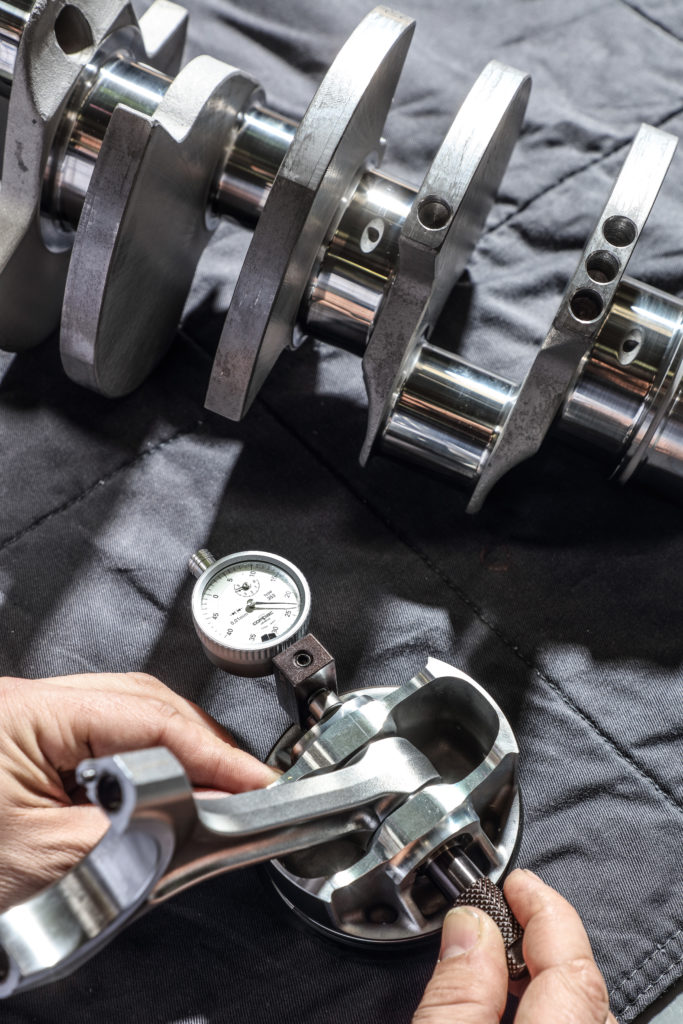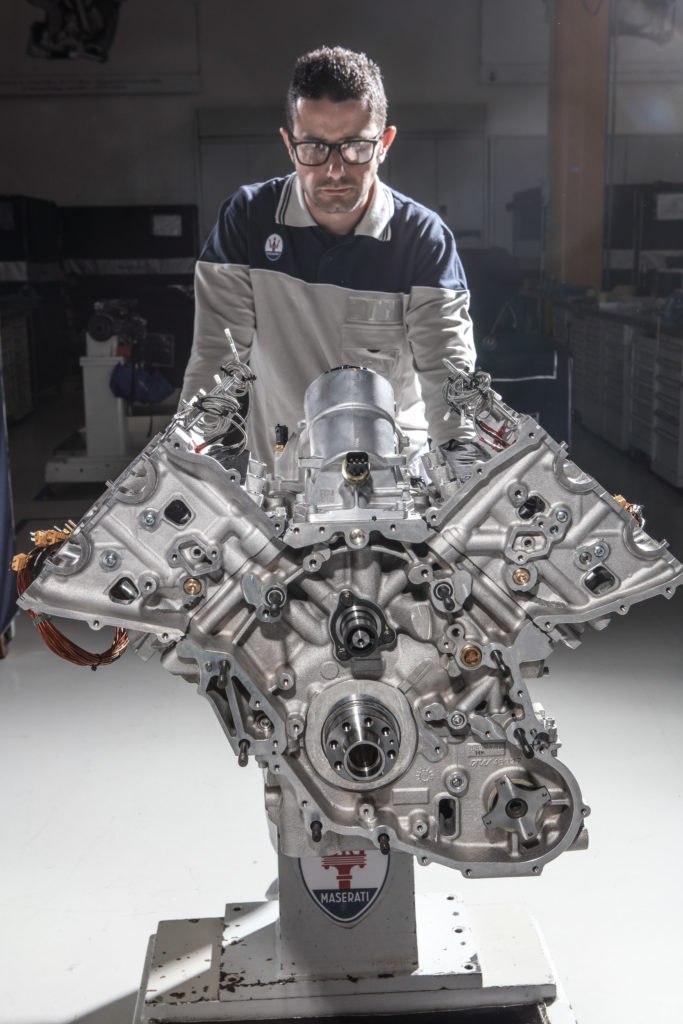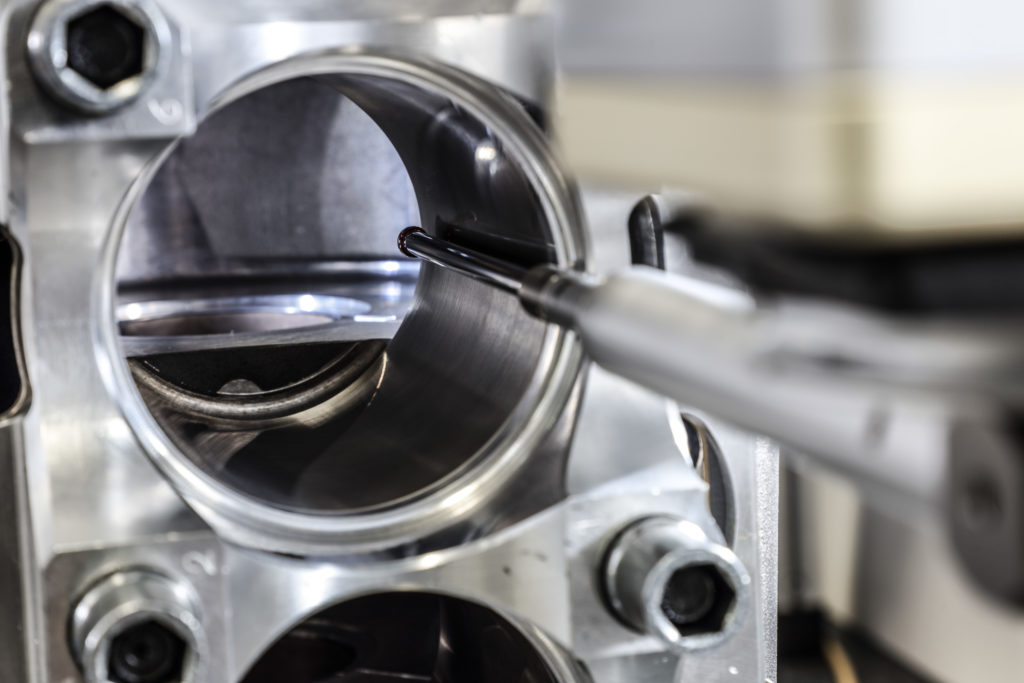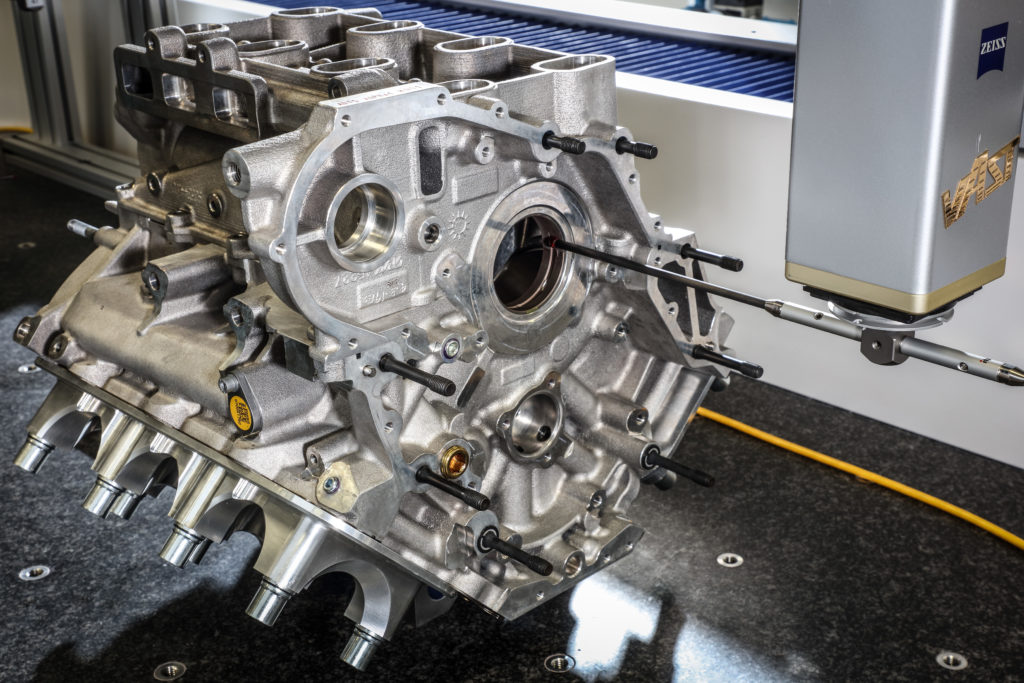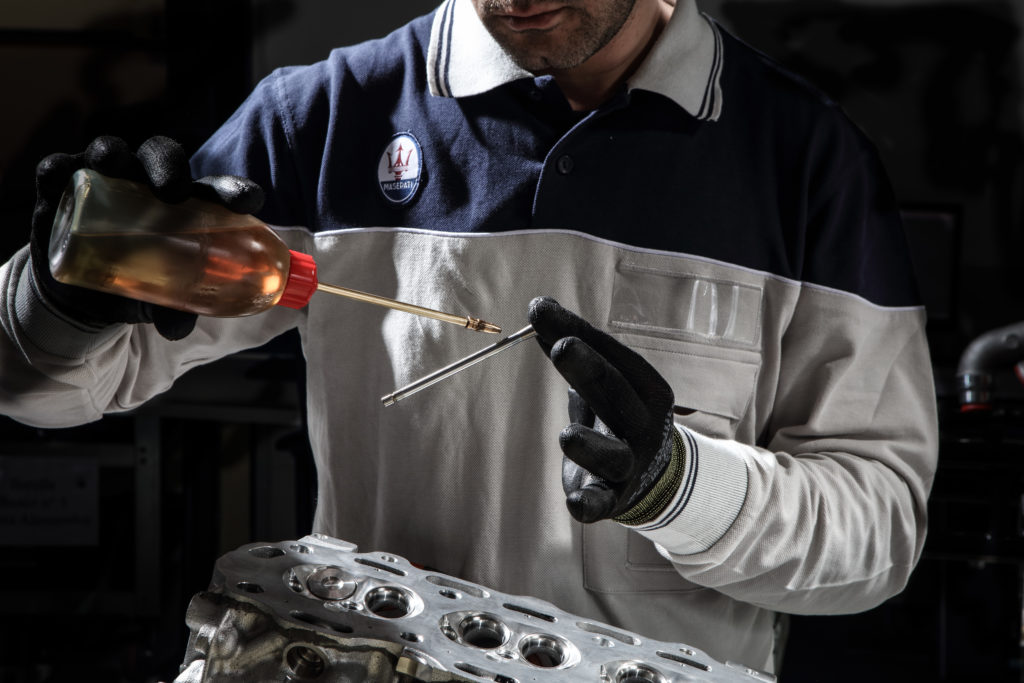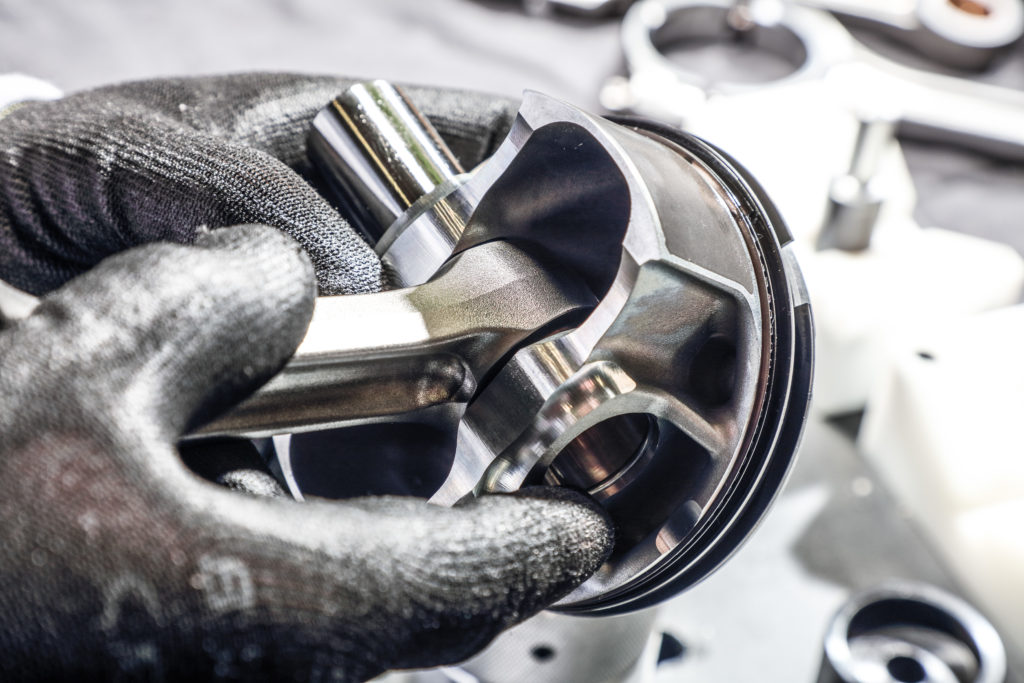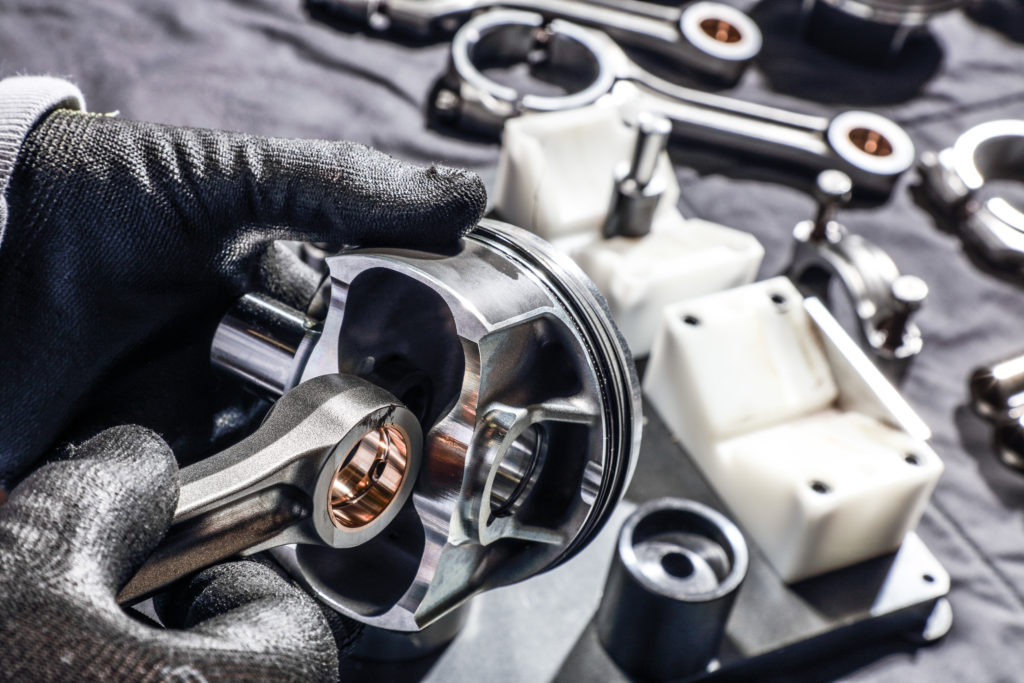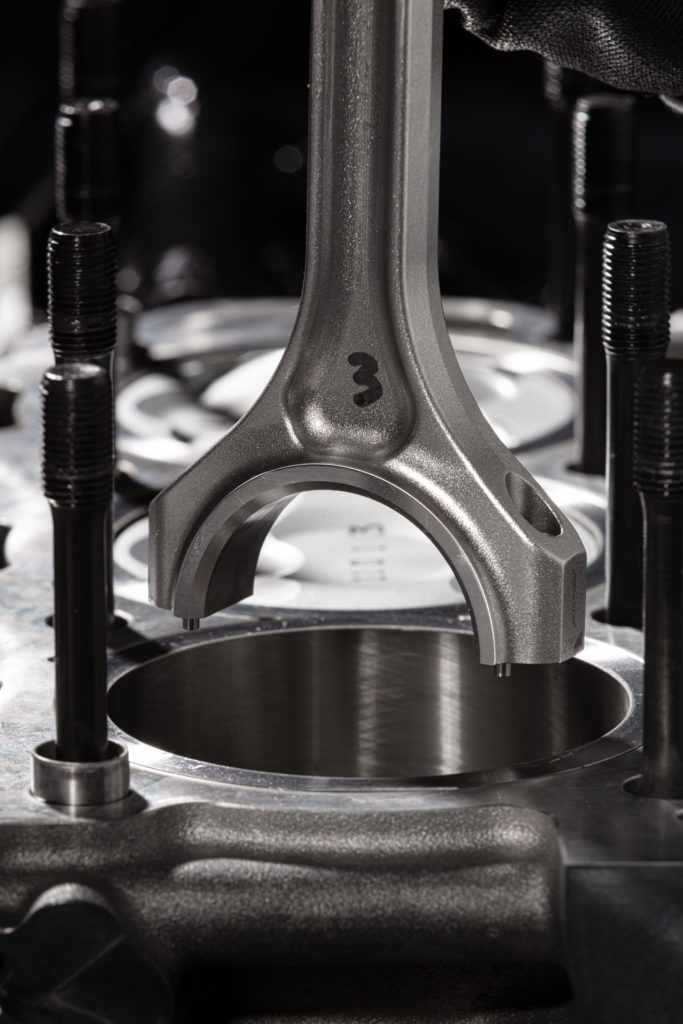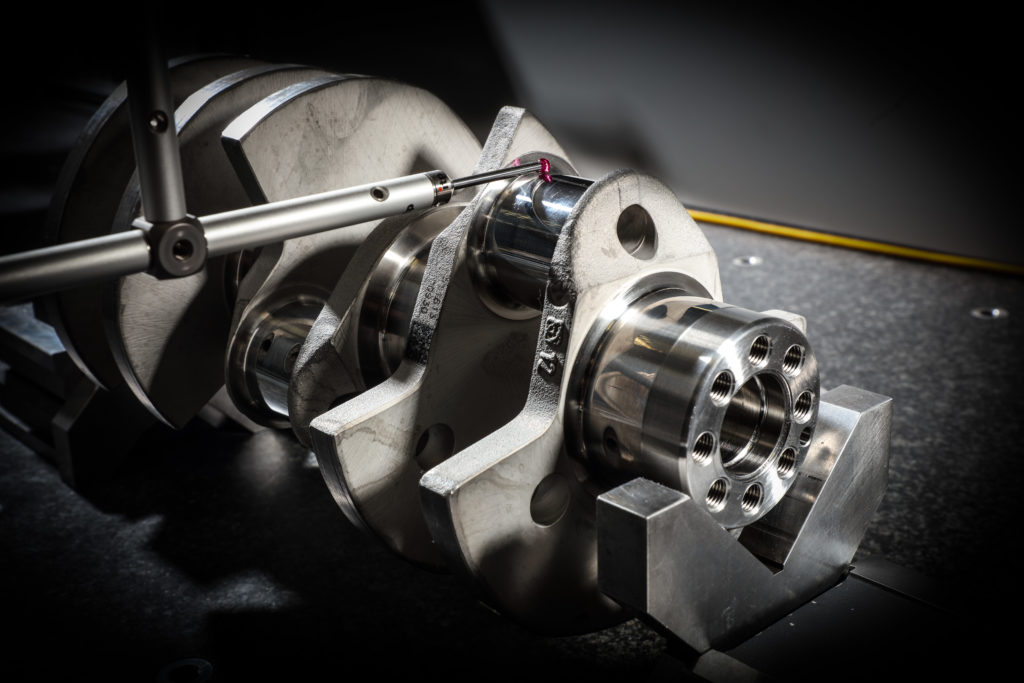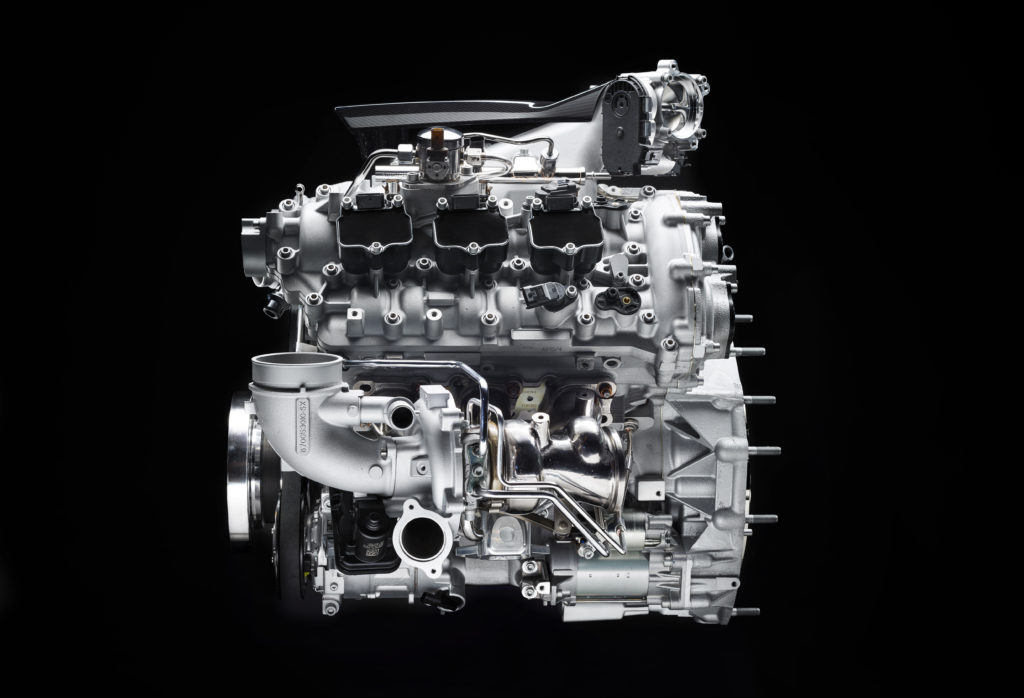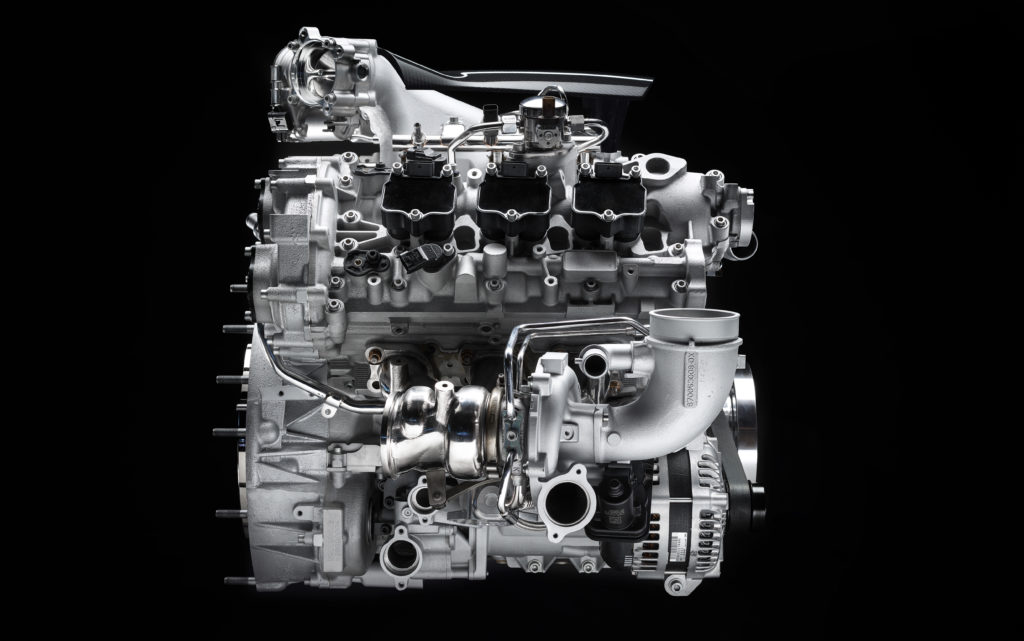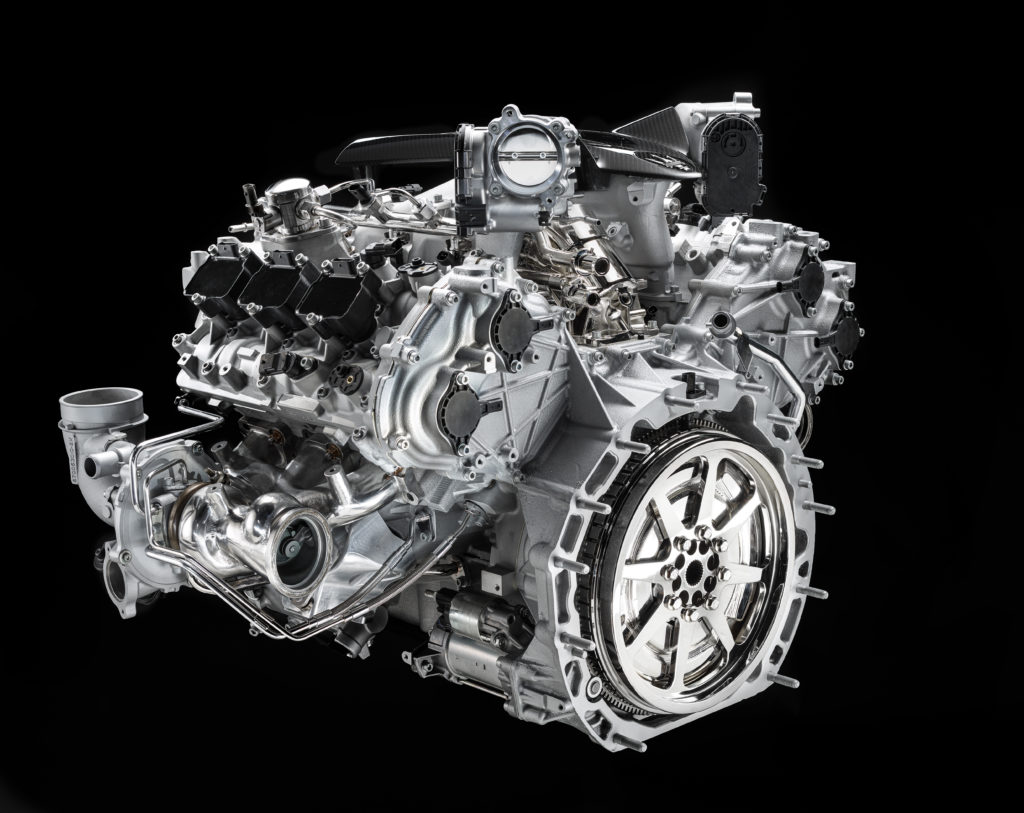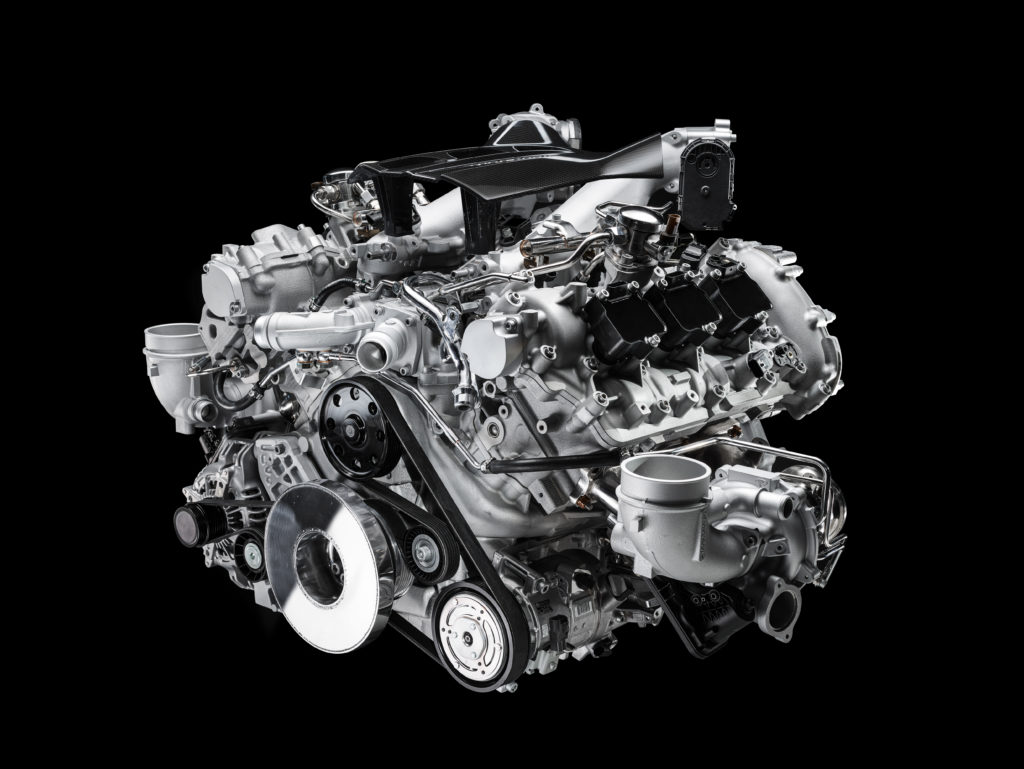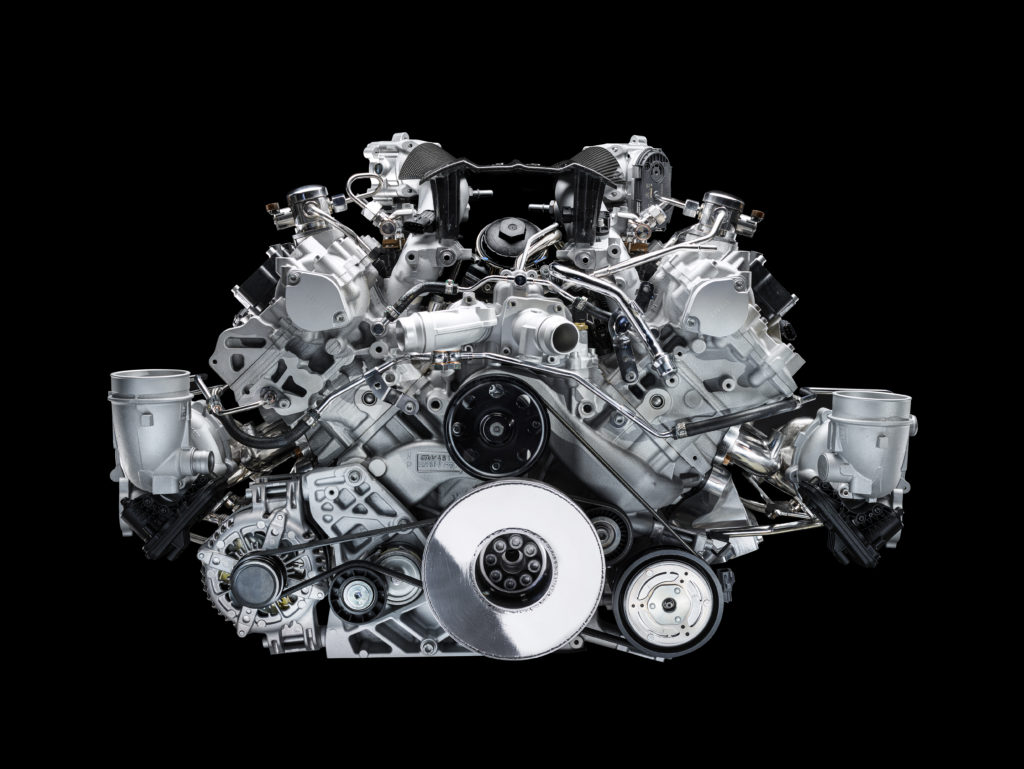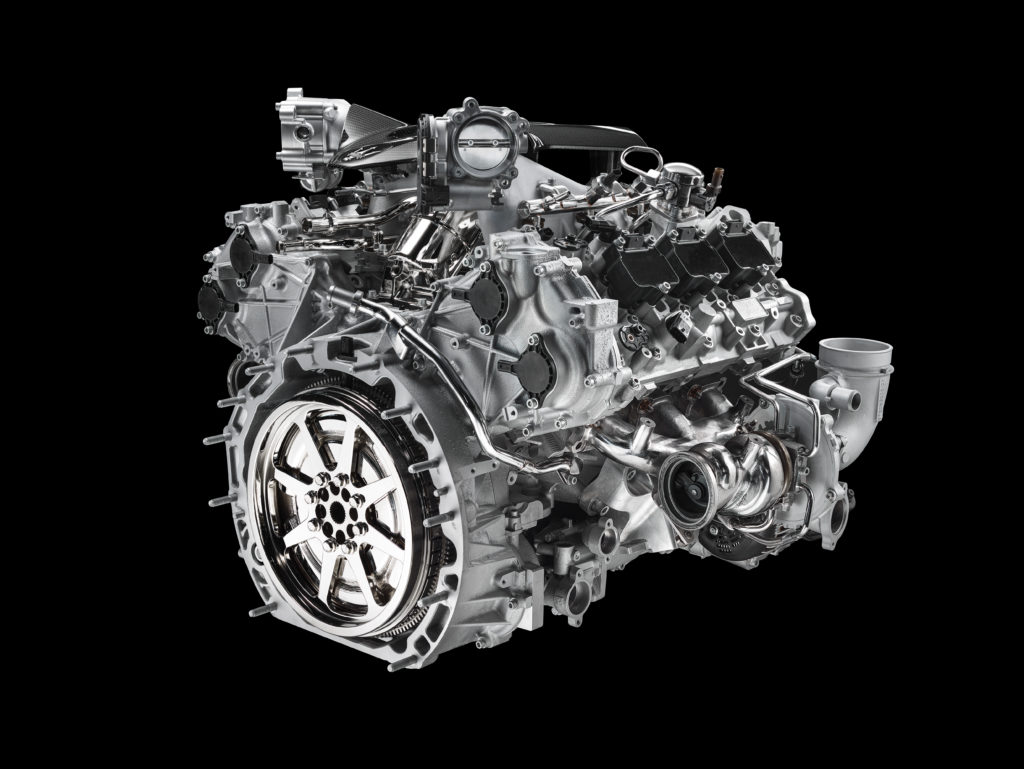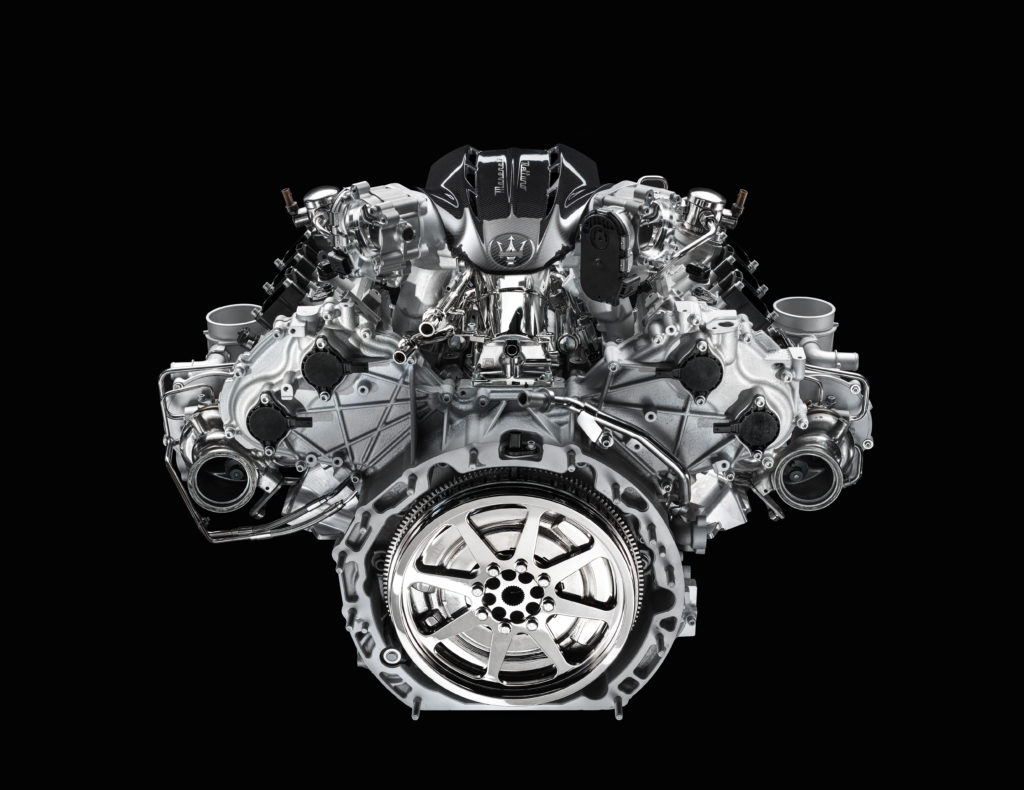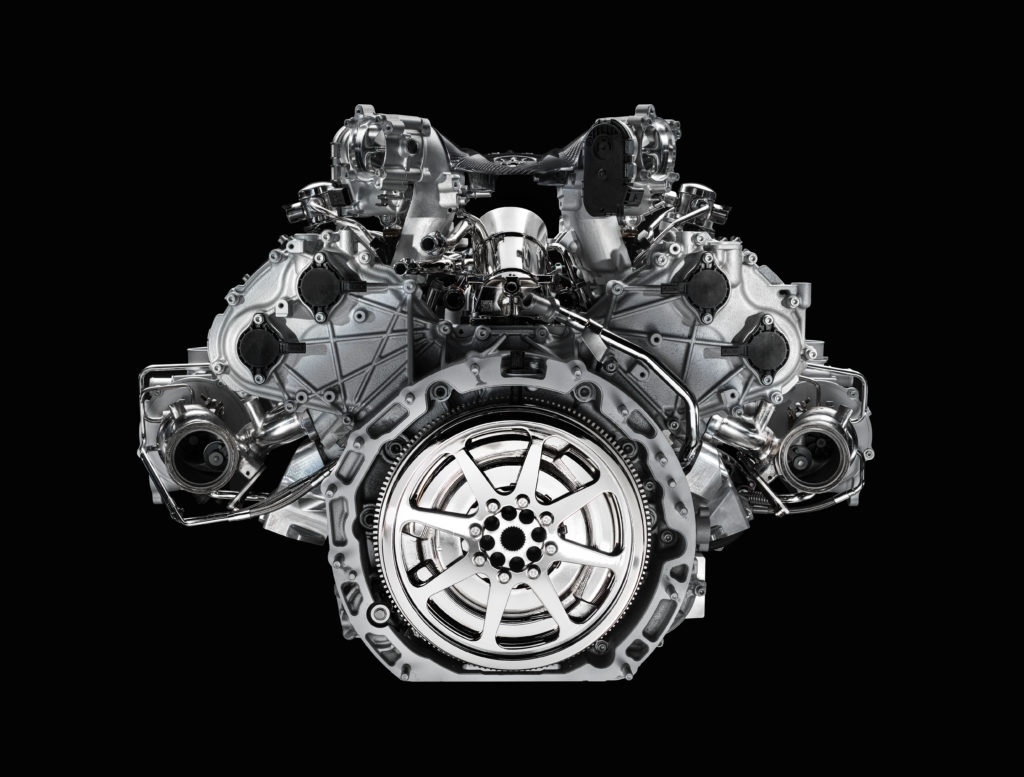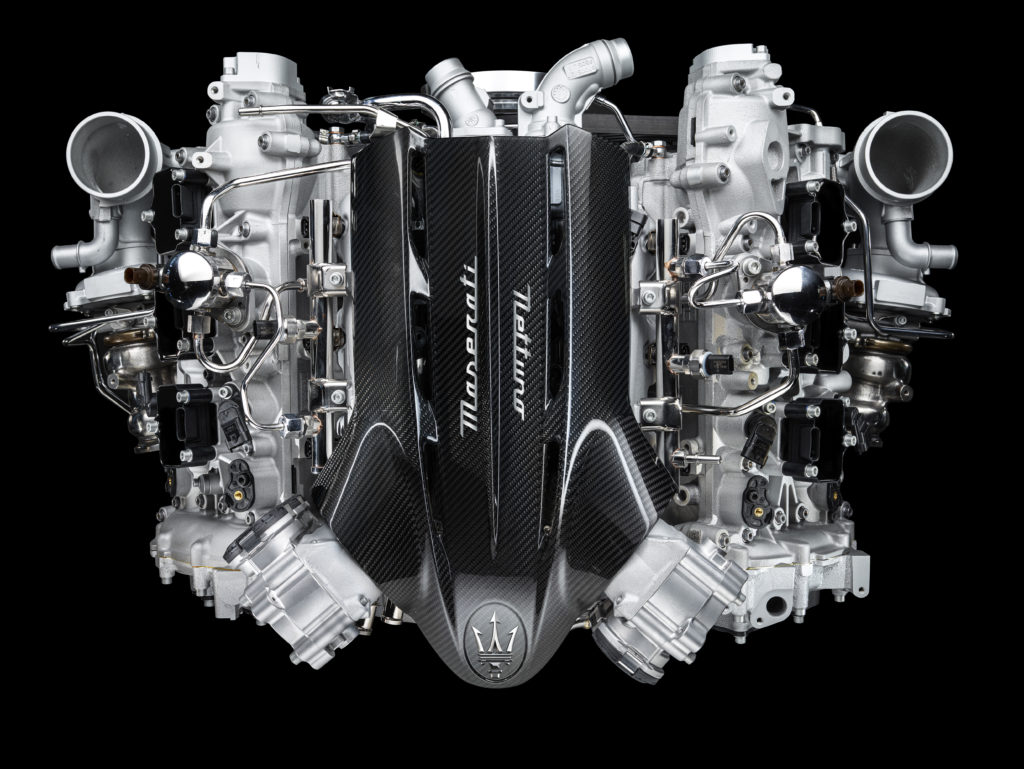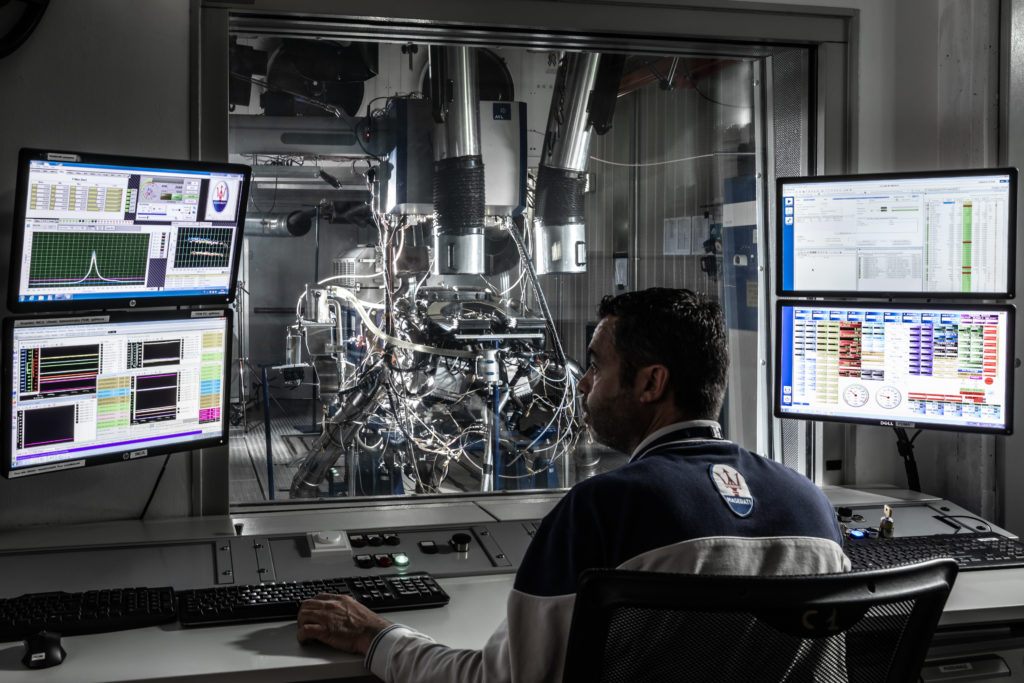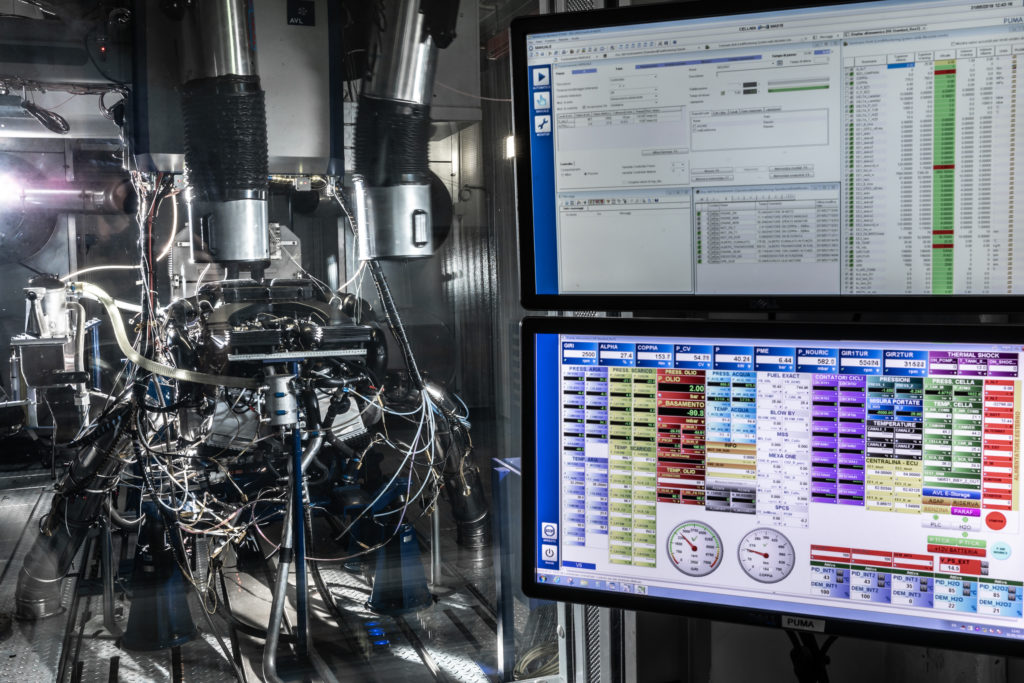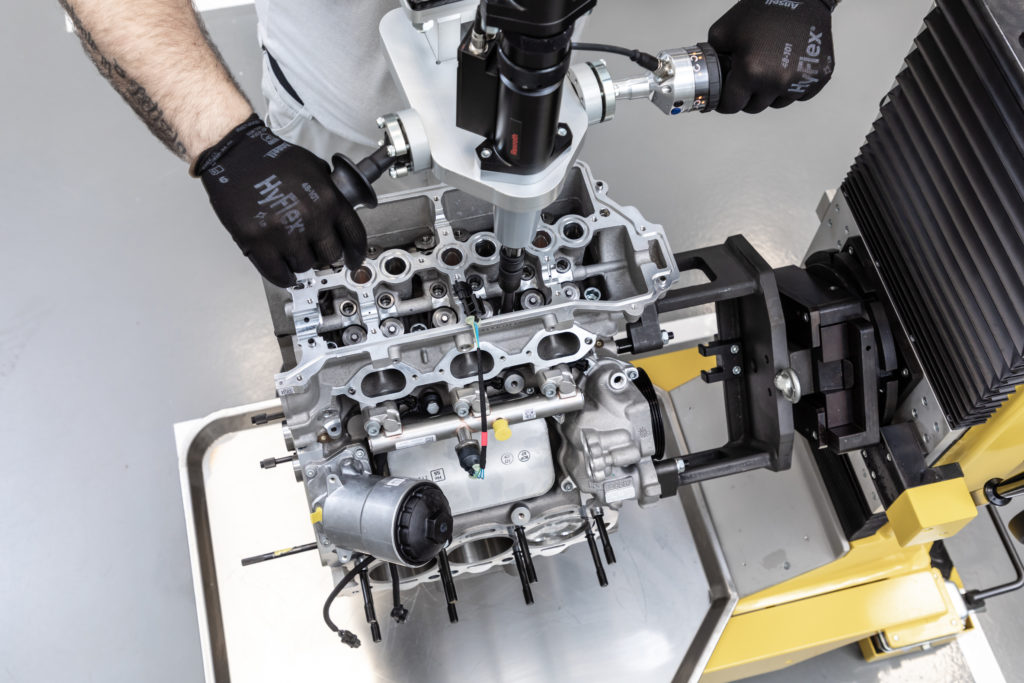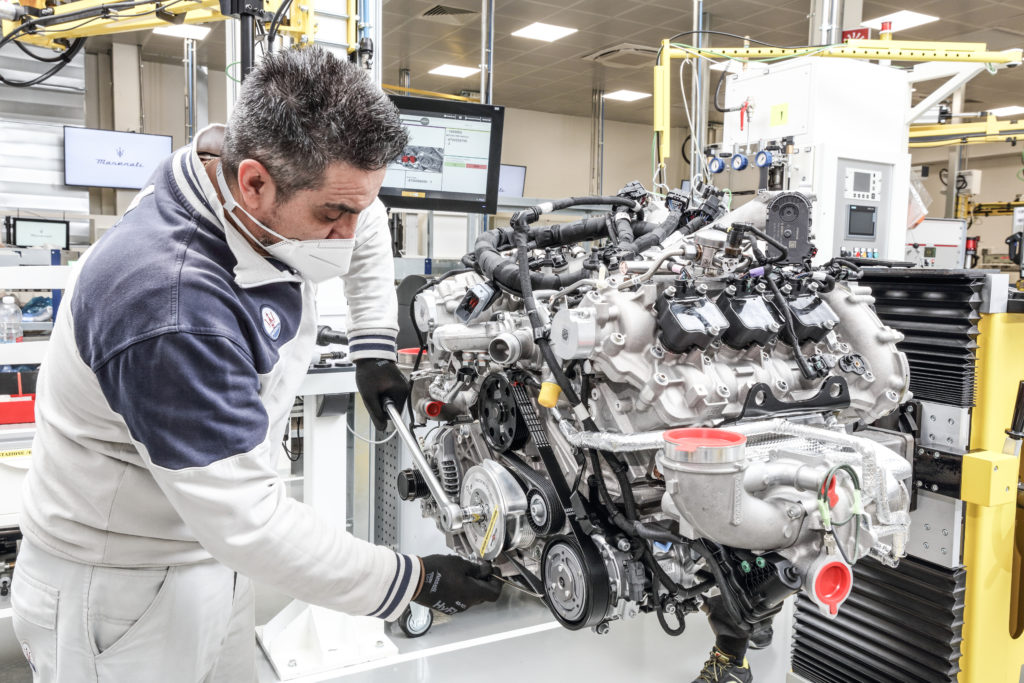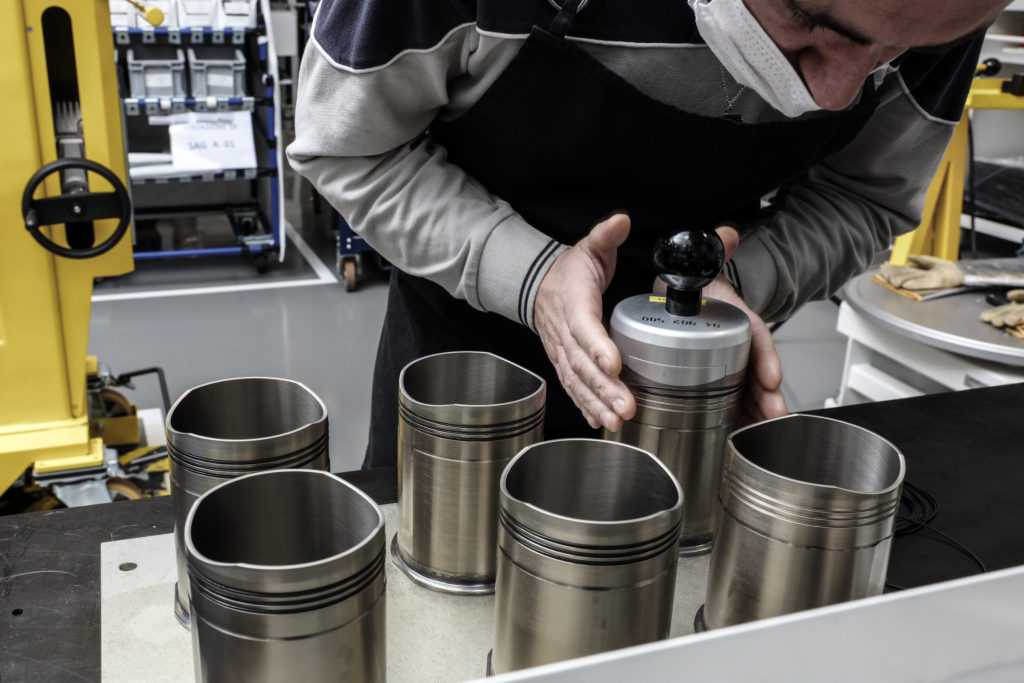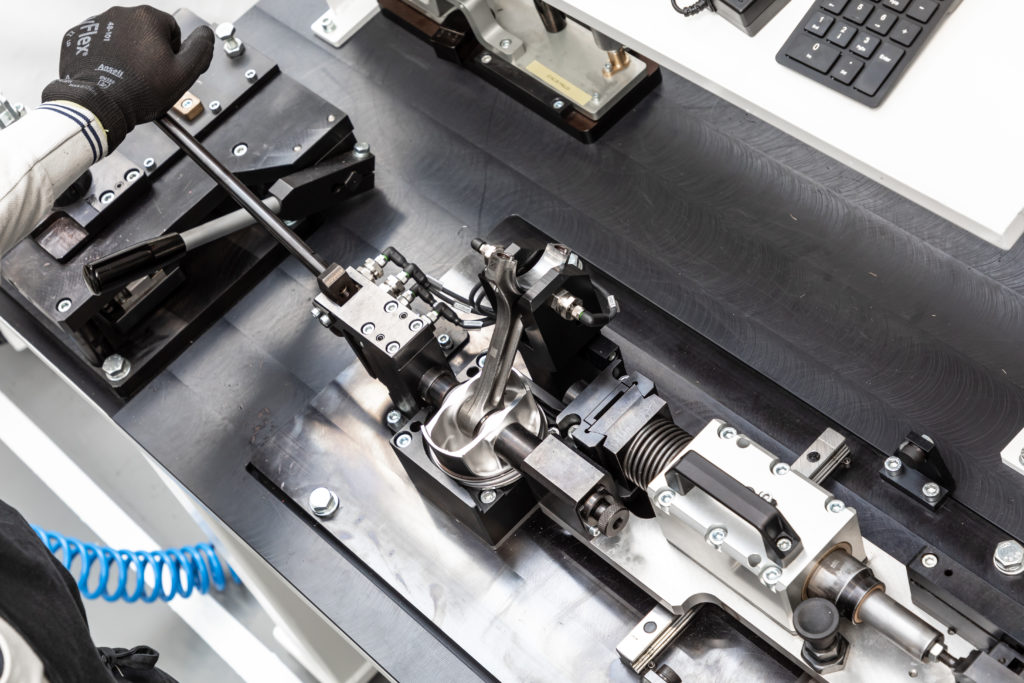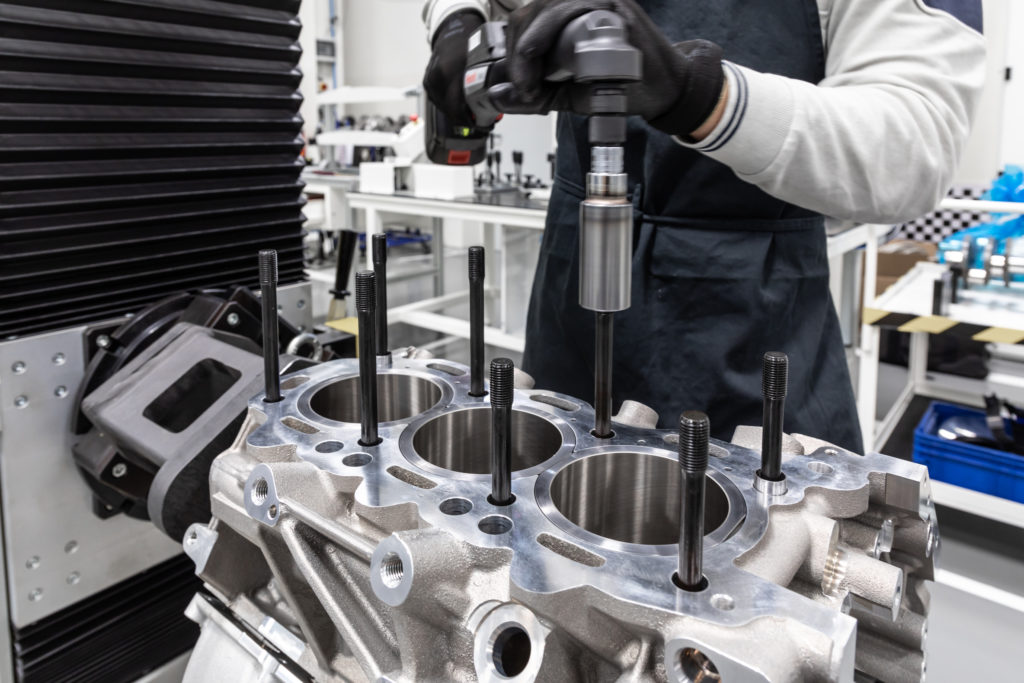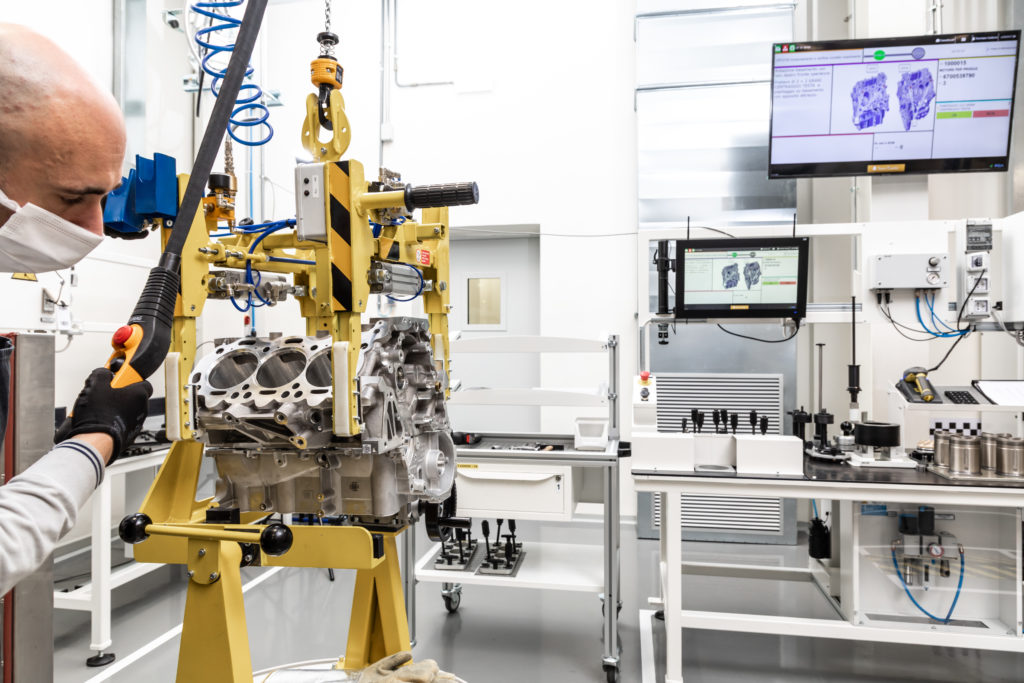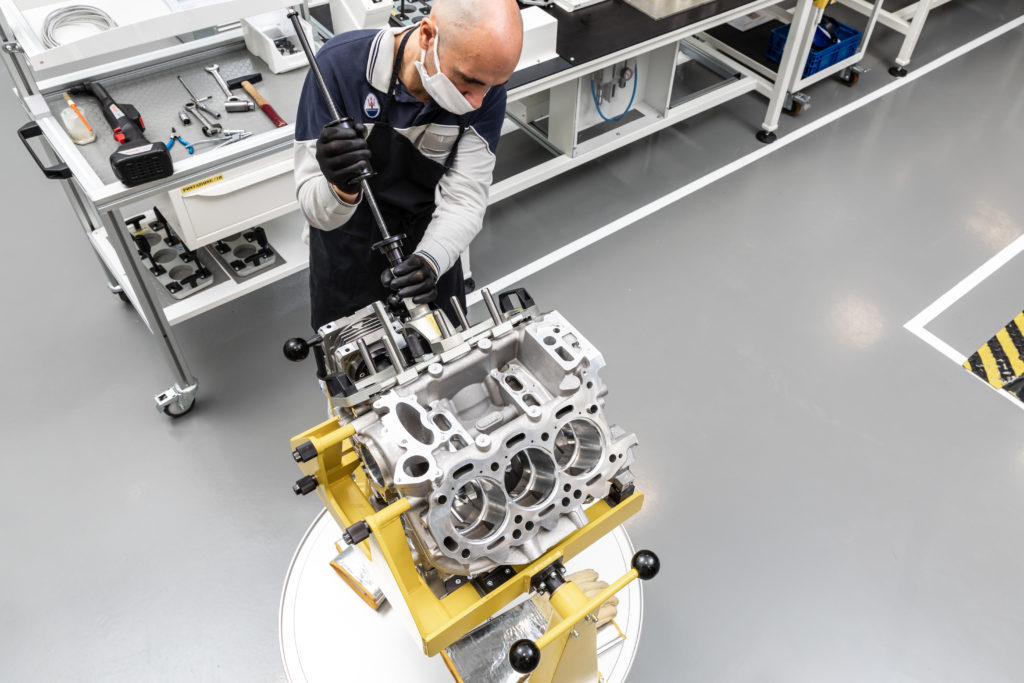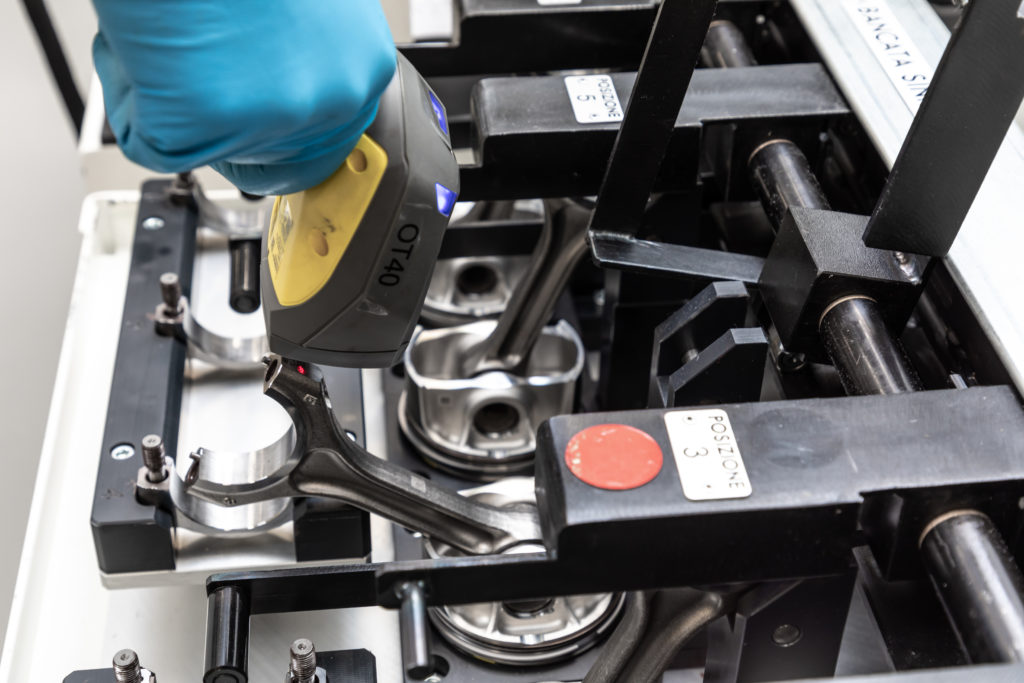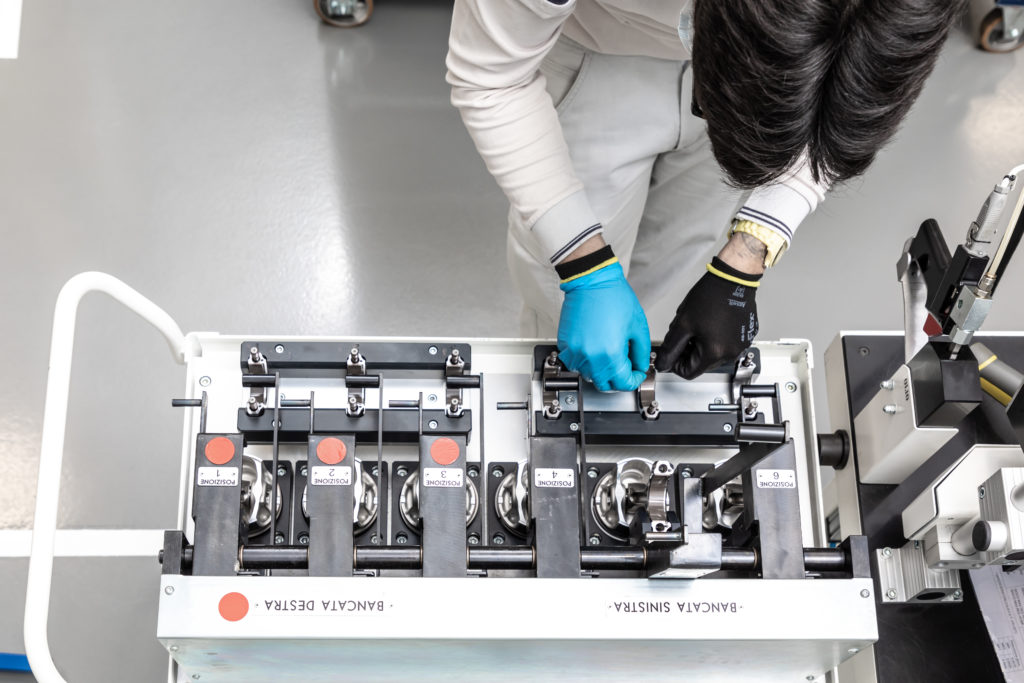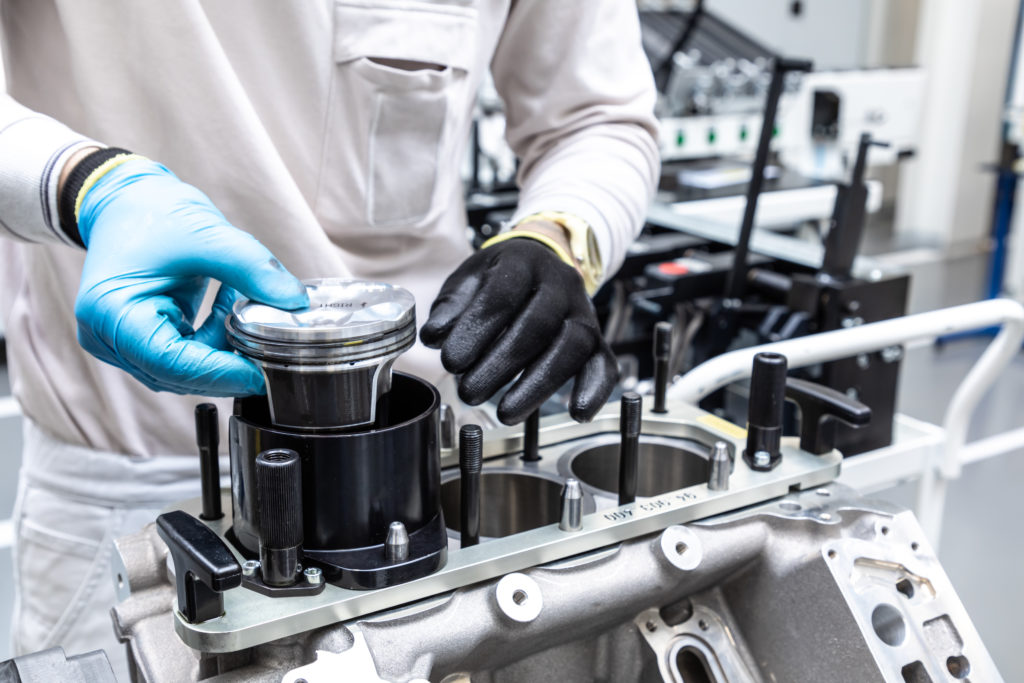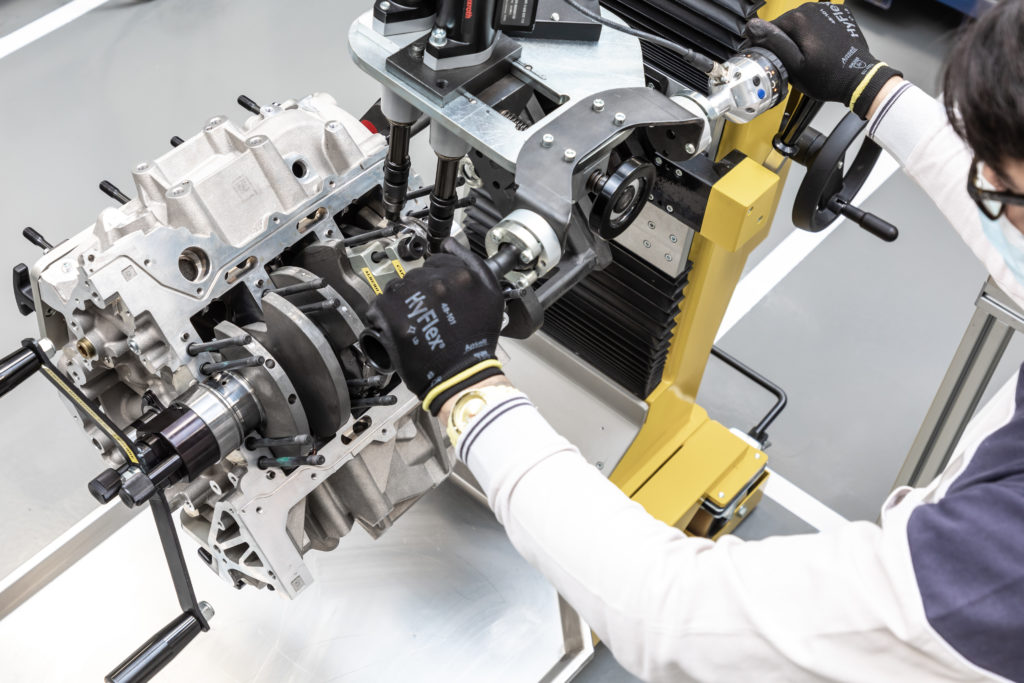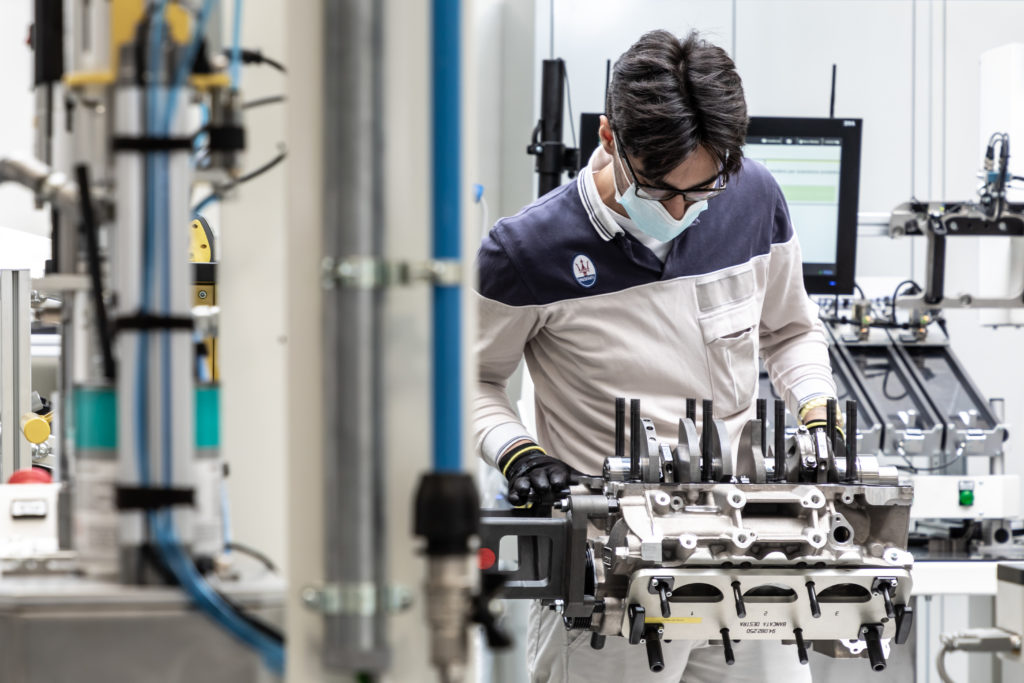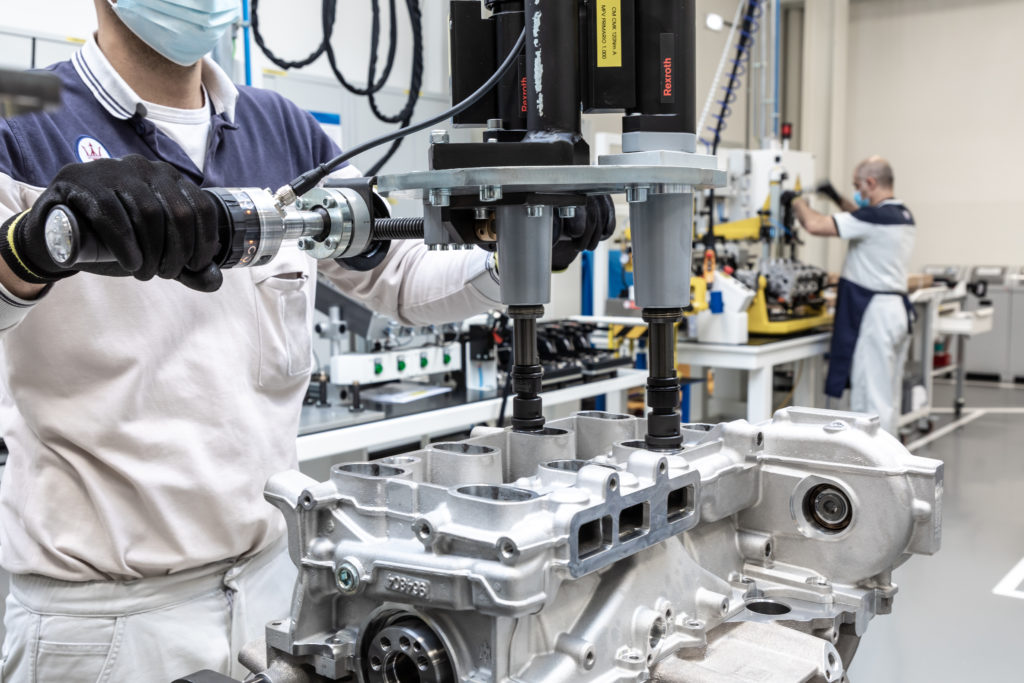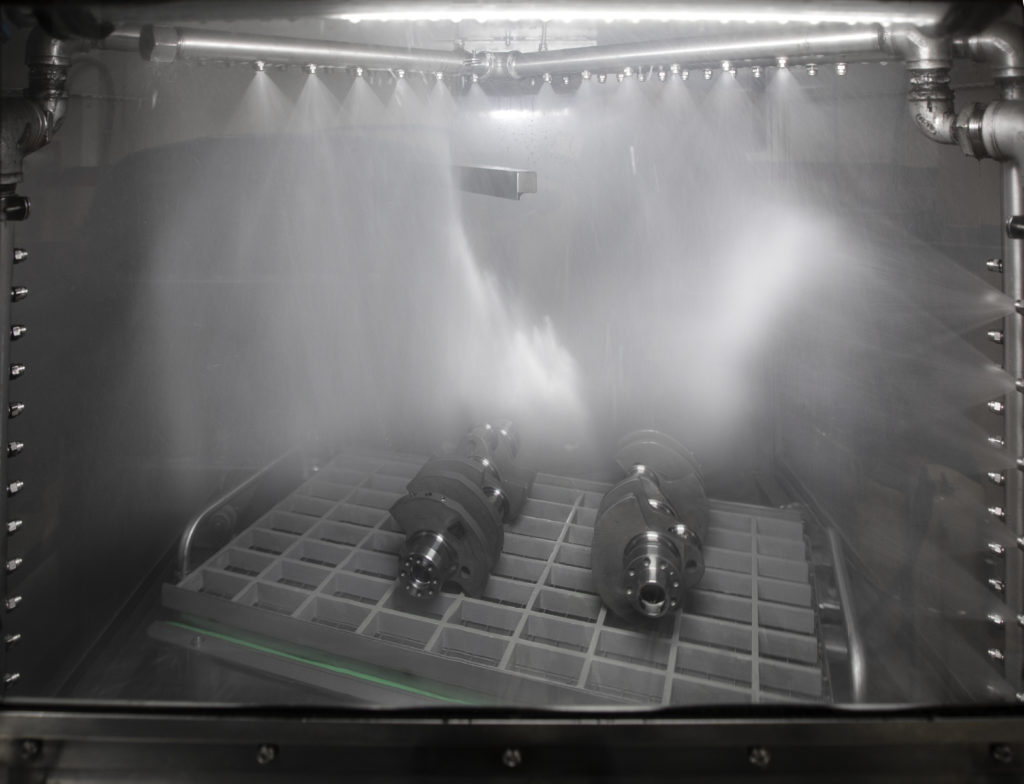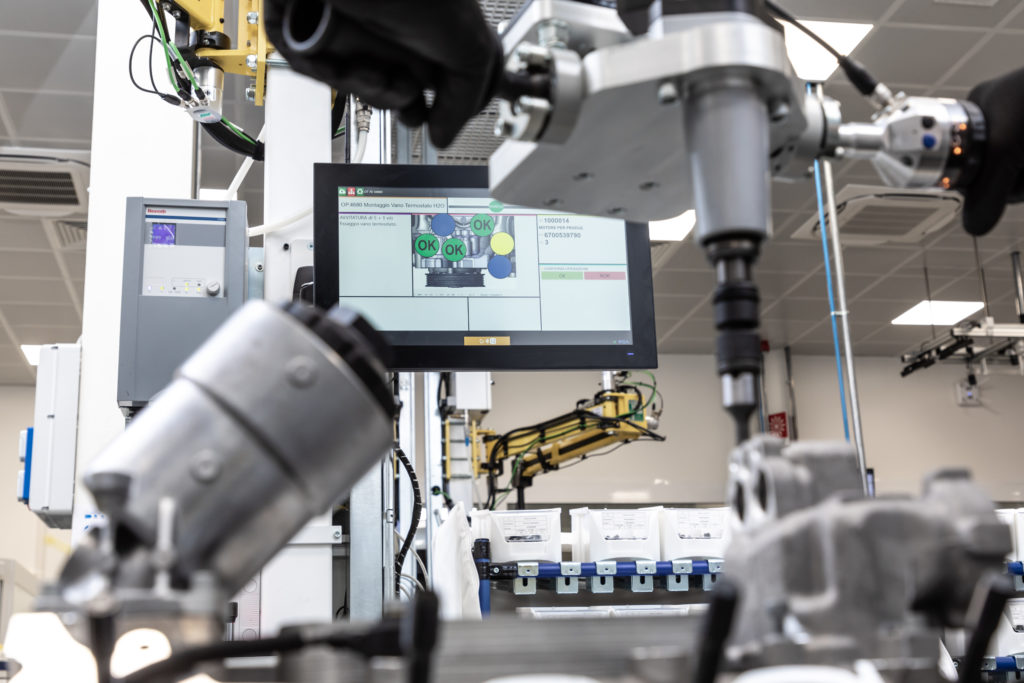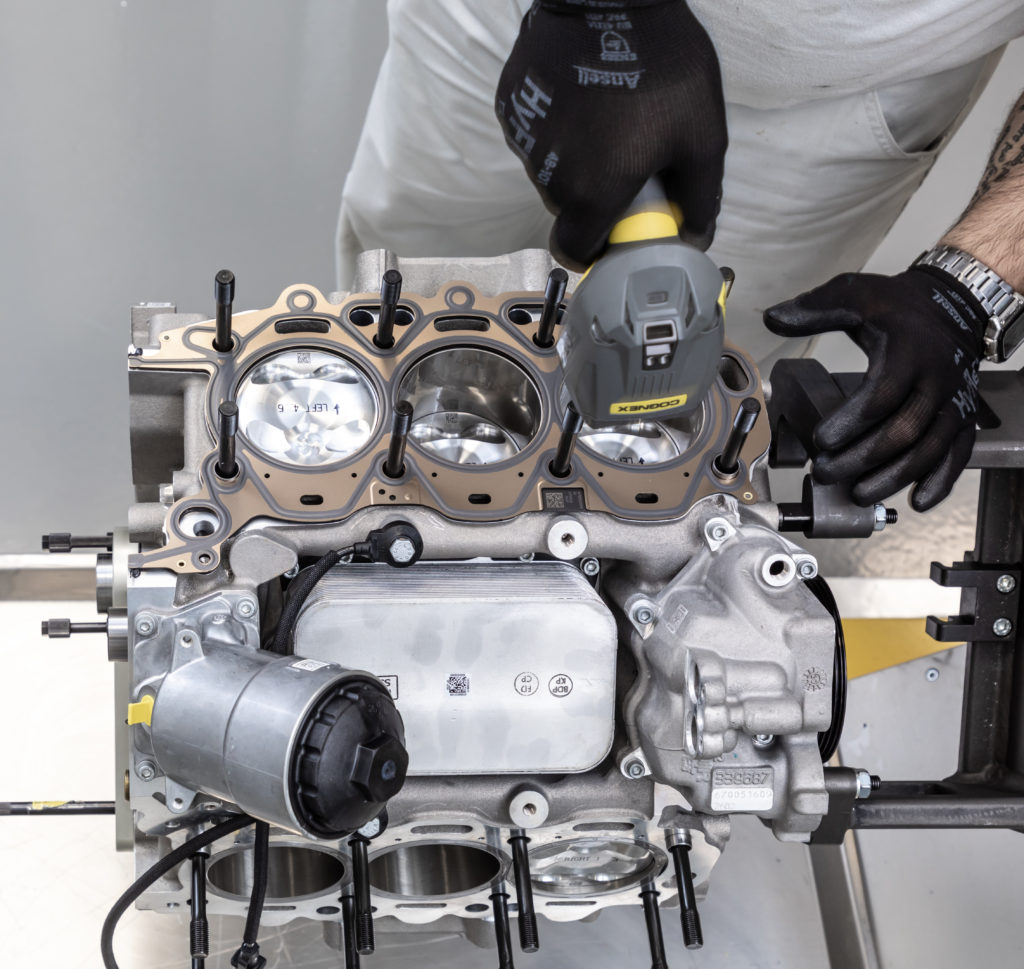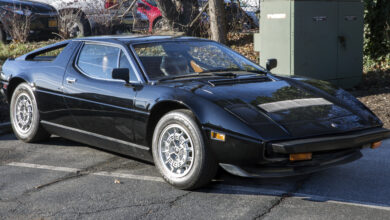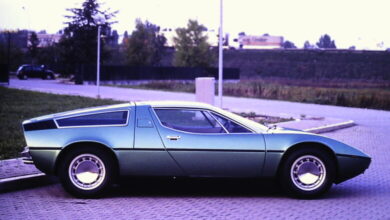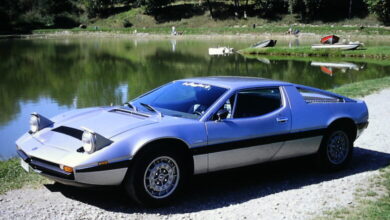EXCLUSIVE – The Maserati Engine Lab: The return at the tradition
Visit to the Maserati factory in Modena and interview with Eng. Jonata Azzali. By Fabrizio Ferrari
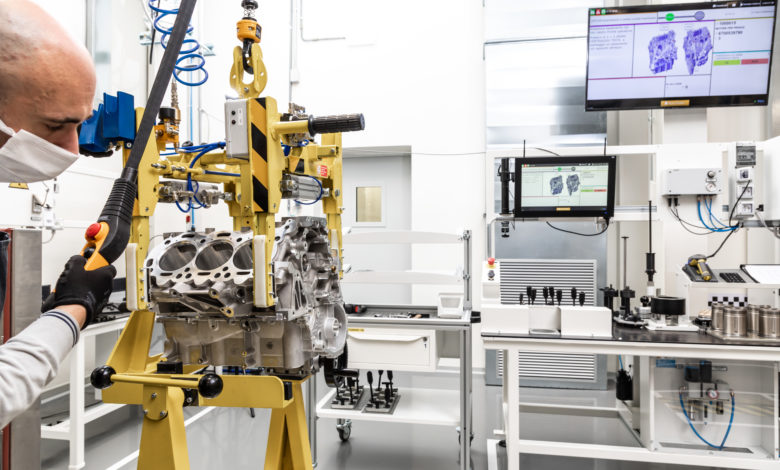
And now I want to describe the visit to the Engine Lab, a true historical and “cult” place of Maserati, thanks to the guide and the excellent presentation of Eng. Jonata Azzali, who explained and discover all the secrets of the design, development and production of the Engine Lab, the new Maserati department where the supercharged V6 “Nettuno” engine are born.
Eng. Jonata Azzali: “We decided to commit to a new look at the Maserati factory, effectively recovering an old tradition: that not only of the design, but also of the development, testing and production of Maserati engines. In fact, Maserati used to make use of various external consultants … ”
Fabrizio Ferrari: Before you were with Ferrari, at least until FCA was created and I remember that period very well, because it was precisely the one in which Maserati and UNIMORE launched their first agreement.
Eng. J. Azzali: “Exactly, that was the period in which the conditions were created: money and knowledge to create the internal skills, to get to organize this department and therefore now to do everything at home. In fact, this plant has all the features and systems to then create the facilities for engine development.
ENGINE LAB: THE EXPERIMENTAL DEPARTMENT
We then began the visit in the experimental part, but then we will go and see a bit of everything because it is certainly worth it. Thus we see from the inside the “Nettuno Engine Lab”, where Maserati series engines are produced.
In the experimental department, all the prototype engines that Maserati makes are born. In this case, the production, clearly in very small series, is in any case organized on the basis of a bill of materials to be acquired. Then all the components arrive in what we call “stretchers”, in the exact sequence in which they were designed for assembly. Each operator thus has his own banquet and in this case, not only the experience is worth, but above all the tracking of each process. As in this phase there is not yet a precise assembly scheme, but the sequence and the relative assembly instructions are created precisely in this phase.
In this case, not only are the assemblies done, but also the disassembly of the various components, for the simple reason that we have to check each of the components how it worked and how it behaves during the operation of the engine.
Also in the past the disassembly technique has always been used, to check each component and the functioning of the engine, but today obviously new techniques have been added that allow us to understand many things, even without having to disassemble the engine and that now let’s go and see .
If we look around, there are internal combustion engines everywhere, except this one which is a prototype of an electric motor, with its axle. In this case, our engineers also had to adapt to the new trends. ”
F. Ferrari: Maserati’s has already been traced, which I believe is right for the future: versions with either the traditional engine or, optionally, with a full-electric powertrain. Above all to favor simplicity and lightness, at least as regards the layout of the car.
Eng. J. Azzali: “Actually we have also created a hybrid for the Ghibli … So we have already done everything, but it is clear that the future is planned in two directions: traditional with internal combustion engines or full-electric.
But, as we can see in this hybrid engine from Ghibli, our current philosophy of experimentation and testing is to install sensors everywhere on the engine: pressure, temperature, thermocouple, etc. All these sensors obviously allow us to supervise the physical phenomena of engine operation. So in this case it is a particular assembly of the engine, as the positioning of all these sensors must also be calculated exactly. In this way it is possible to map the various phenomena and thus write the various control values in the control unit, for the correct functioning of the engine.
Speaking of non-destructive tests, we are referring to a machine that greatly facilitates us in this sense: it is a mass spectrometer, which has the specific function of calculating the exact content of metal waste in the engine oil. ”
F. Ferrari: It is clear that in this way you realize exactly the type and amount of wear of the parts.
Eng. J. Azzali: “Exactly! Lead no longer exists, it has now been replaced with silver as a wear metal and in oil analysis, after a certain number of cycles, it is clear that it is a very important tool to keep the natural phenomenon of usury. In the same way, if iron slag is found in the oil, in addition to the silver parts, it means that the wear is excessive and some parts of the engine are being destroyed. While if there are traces of sodium in the oil, it means that there is a phenomenon of water leaking from the cooling circuit. Finally, if an excess of copper is found, it means that the turbocharger bearing is melting.
In addition, we can also control oil oxidation phenomena, possibly due to temperature, but above all, in general, we thus have the ability to control the various functions of the engine, without the need to disassemble the various components each time. ”
F. Ferrari: With the various sensors, are you also able to control the combustion process inside the chamber?
Eng. J. Azzali: “Obviously, with a specific sensor in the chamber, it is possible to keep the progress of the entire cycle under control. In addition to an instrumented head with the sensor in the chamber, we can also use an instrumented spark plug: that is, a very small spark plug that can be integrated by the pressure sensor.
In addition, we also have metrology: that is, the control of the various components before being assembled and the control verification after operation. And all of this is of the utmost importance when it comes to non-series, but experimental parts. We have several tools, including the electron microscope, which allows us to view the wear or deformation areas in every detail, or even the profilometer, while with the three-axis Zeiss we are able to understand exactly what any possible geometric deformations of the piece. ”
F. Ferrari: Even at the level of experimentation you have adopted a very accurate methodology, but I would also say artisanal … A practice that in many companies is being lost a bit, due to excessive trust and perhaps also an “abuse” of the virtual …
Eng. J. Azzali: “The best we have found is the direct and continuous comparison of the virtual computation with the data provided by the physical experimenter. If the calculator works alongside the experimenter, the maximum benefit is certainly obtained. Also because in this way we can focus better on the choices that experimentation offers. It is no longer necessary to calculate everything, but to carefully check only the parts and phenomena that are of interest at that moment. ”
F. Ferrari: I believe that softwares can simplify our life, improving and speeding up the research process. But any virtual experimentation and research, if it is not then validated by the physical process of “real” experimentation, will never be able, even if the softwares are more and more complex and sophisticated, to understand and evaluate all the variables that we observe in reality.
Eng. J. Azzali: “I absolutely agree and if I can, I would also like to add that the guide that virtual computation gives to the experimenter, also gives us the exact perception of the understanding of the phenomenon itself that is being observed. In fact, as a company, we certainly cannot afford to experiment “physically” everything and therefore, with the “skimming” of virtual computing, we can thus go and experiment almost without fail, with a considerable saving of time and, obviously also of resources.
ENGINE LAB: THE TEST ROOMS
Now we move to the test room, where the assembled and finished engines are actually tested. We have five, here at Maserati, and they are test rooms of a certain importance, as the engine brake is calibrated for powers from around 700 up to 1000 HP. They are quite large environments, where the engines can run alone, or even connected to the respective gearbox or even to a part of the transmission. And if necessary, we can also add radiators and other related vehicle components, such as intercoolers or whatever. Furthermore, we can now also test hybrid or electric power units or powertrains. ”
F. Ferrari: It is obvious that the possibility of combining the engines with the relative transmission, thus makes it possible to immediately calculate the relative power consumption.
Eng. J. Azzali: “Not surprisingly, two of the test rooms are already electrified, with battery emulators that simulate the high voltage current of our systems and batteries up to 1200 Volts. We can thus supply up to 250 Kw of power. While as regards the cooling, we can use three different systems: one for the engine with a lot of water, up to 11,000 liters, then a second to cool the water of the intercoolers (which must keep the intake air at room temperature) and finally a third system that allows us to split between the right and left banks (which often have non-homogeneous operating temperatures in the car, due to the imperfect symmetry of each component of the package).
All the cells are equipped with dynamo which, in addition to acting as an engine brake, can also move the engine itself (passively). In this way the dynamos can also generate current, which we then feed back into the electricity grid. It is not an exceptional contribution, but it still goes in the direction of maximum sustainability of our plants.
We are now moving to another environment and this is a good news, certainly not very widespread. In fact, this is a 4WD powertrain cell, as in this case we no longer have a single engine brake, but four dynamos, which serve to brake each of the four wheels of the vehicle. It is therefore possible to replicate a mechanized chassis and thus carry out all the tests as if it were a real car (without the car). A multi-task station as, depending on the components to be tested, more or less wheel hubs can be connected, if necessary. Just as it is possible to carry out particular tests without having the car available yet, in the same way it is also possible to test finished cars. In this case, the four hubs of the car are connected and, in this way, it is possible to carry out all the tests that are normally done on the track. In addition, since the brakes are connected directly to the hubs, it is possible to carry out tests that cannot normally be carried out on a normal roller bench, such as torque vectoring, or even yawing the car, etc.
F. Ferrari: Of course, having the control, separately on each hub, it is possible to simulate every real situation.
Eng. J. Azzali: “But the real purpose of this cell is precisely what we are observing now and that is to be able to test also the full-electric power units. In fact, that big gray “cabinet” is the replica of the connections of the various battery packs, which must ensure, through a BMS control electronics, the power supply to the various functions of the car and not just to the electric motors. In a separate section we have the battery container, fire resistant of 7×2.5 m. where we can test the battery packs with different cycles in various conditions of use and with a power up to 750 Kw, which thus ensures the power supply to the cell in every situation.
ENGINE LAB: “NETTUNO” ENGINE ASSEMBLY DEPARTMENT
We are quite proud of this department, here at Maserati, as it was by now that no more engines were produced in the company since 1998, while now we have returned to producing directly. In fact, here we produce the same engines that were designed and developed in the experimental part, the supercharged V6 “Nettuno”. For the moment it is intended for the MC20 only and therefore we are calibrated on the production of the car, with an average of 4/5 engines per day. We could get up to 12 a day but, what is more important, is to be back to produce them in this factory in Modena. In fact, we are in the same area where in 1939 the Orsi family began building engines in Modena. ”
F. Ferrari: Absolutely, I have always thought that Modena represents everything for Maserati: not only its historical roots and tradition, but also the possibility of experimenting and creating prestigious and ultra-technological limited productions ad hoc.
Eng. J. Azzali: “For sure, which preserves the tradition better than Maserati today there are few. When we dug to renew the floors of the sheds, we incredibly found even some of the old engine brake bases … ”
F. Ferrari: How does the assembly of the engines work? Is there a specific employee for each engine, or does each engine have its own well-documented history?
Eng. J. Azzali: “It is undoubtedly a complex engine, at the design level, but the assembly sequence was very well organized and therefore simplified, in order to guarantee a certain reliability of the process itself, for any operator . As of this engine we have foreseen a production for at least 10 years, on the various versions of the MC20, coupé, spider, etc. ”
F. Ferrari: For sure this is a car that lends itself to many special and limited series, as well as, why not? Even dedicated “One-offs”, in my opinion …
Eng. J. Azzali: “The assembly of the motors is manual, but each operator is dedicated to only one of the 6 stations in which we have divided the assembly process of each individual motor. Each operator is engaged for about 4 hours in each assembly station. This is a huge amount of operations to be carried out, for each individual operator and therefore, to make the process safe and reliable, we have set up touch screens with tutorials on the operations to be performed. Operations that, once performed, are “authorized” or not by the same system, equipped with sensors and cameras that supervise each operation performed by the operator himself. If an operation is not performed correctly, the system does not give the ok and the operator is forced to retrace his steps automatically.
So ultimately, the motor assembly system is manual, but the control is automatic and above all, every operation is recorded. ”
F. Ferrari: Perfect compendium of tradition and innovation, where craftsmanship and advanced technology come together in a perfect union.
Eng. J. Azzali: “We believe so and so far the results are proving us right. Also because another Maserati tradition that continues is precisely that of testing each engine individually. Minimum 40 minutes of running-in in the test room, with the same checks, oil and so on, as in the testing area. ”
F. Ferrari: I would say that is a really good guarantee for the final customer.
Eng. J. Azzali: “It is certainly one of the benefits that Maserati guarantees its customers, but the engine test on the bench is not the only one, also because there are also tests on the car (at the bench) and finally also on the road with our testers.
In addition, about once a month, we also perform a long run, about 4 hours of testing (long-lasting stress) on a random engine. Clearly not an engine that is then sold to the customer, as the test is used to implement our database and statistics, however it is a normal production engine, in all respects identical to the others. An important test, as it allows us to understand what will happen to customers over time, especially in cases where the cars then accumulate high mileage. ”
F. Ferrari: This type of test is also very important for what concerns the competitive (racing) future of the MC20 itself…
Eng. J. Azzali: “Exactly. In addition, the whole environment is aseptic and air-conditioned: a real clinic for motors, with a totally aseptic space, which in this way avoids any contamination, which could then affect the wear and life of the motors themselves.
Finally, a further department is dedicated to roller bench tests, for certification relating to homologation. And with the different tests to be carried out, plus the different variants of cars and the requests of the different regulations and homologation cycles in force in the various states around the world, the tests to be carried out multiply dramatically and this too becomes a very long and demanding job.
And it is not just a matter of doing the various tests for each type of car and engine, but we also have to check what are the “indirect” emissions, that is to say the pollutants that every single part of the car emits after use: tires , tank, paint, etc. And to do this we have a special isolated room, where the car remains for three days and where all kinds of emissions are observed and quantified.


